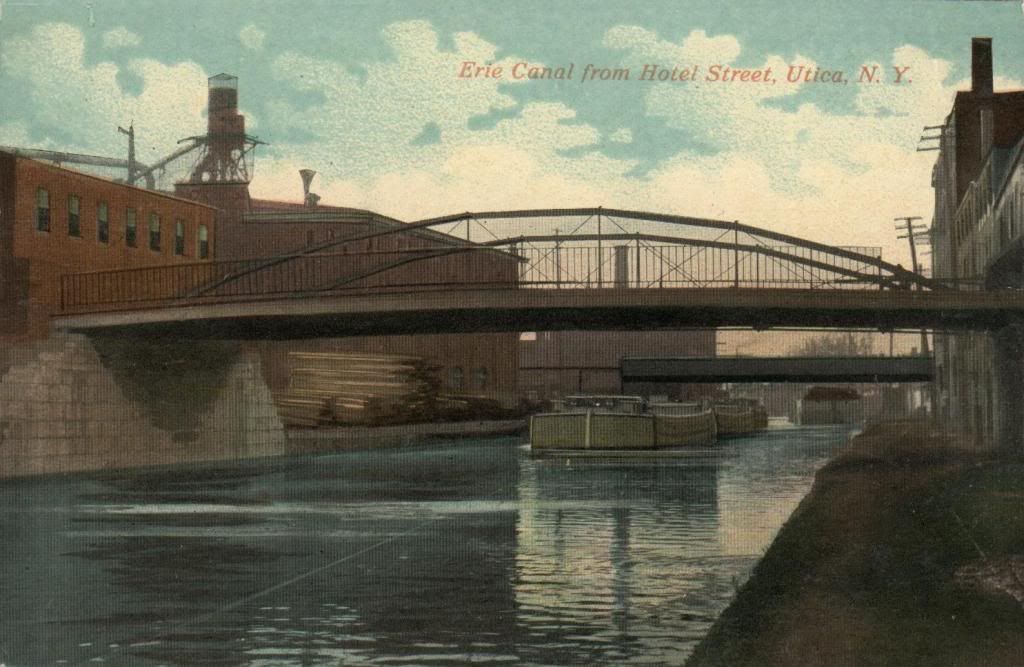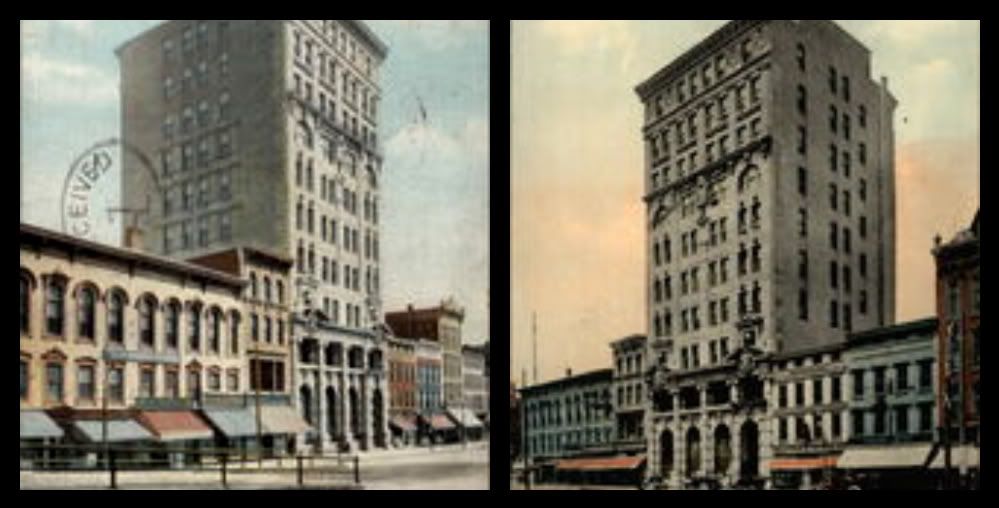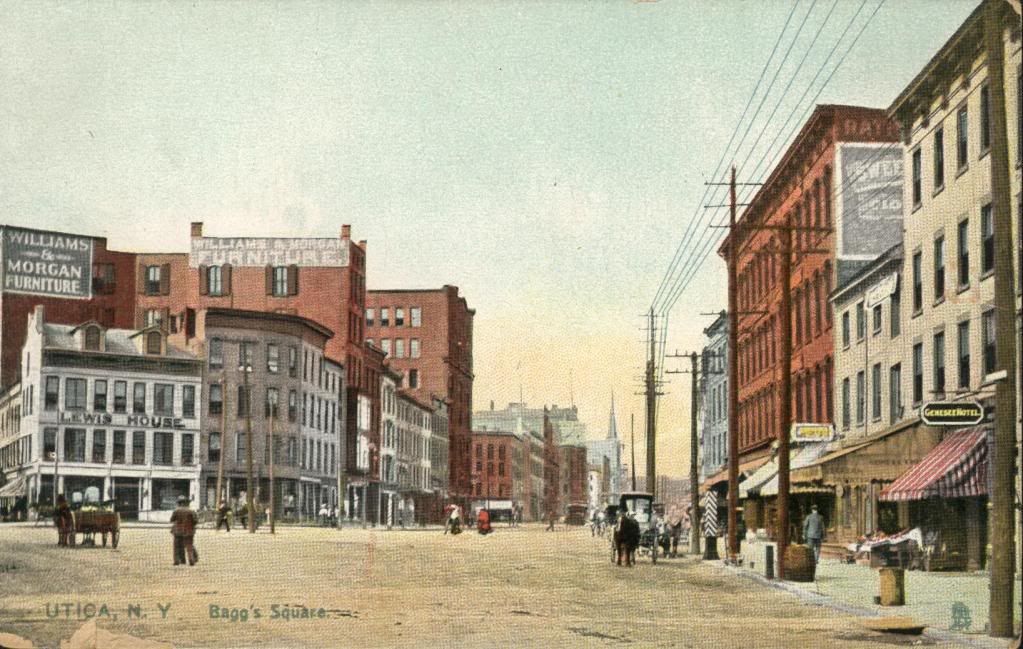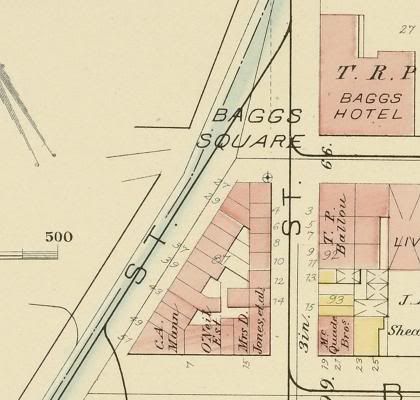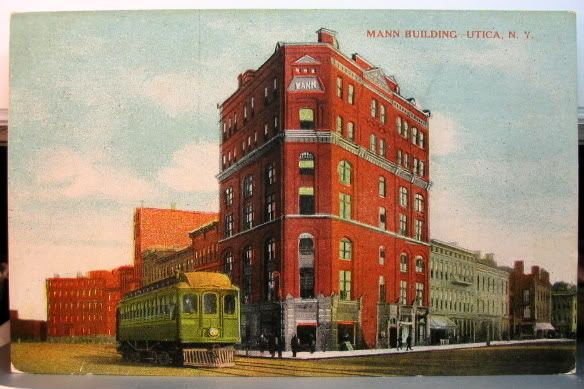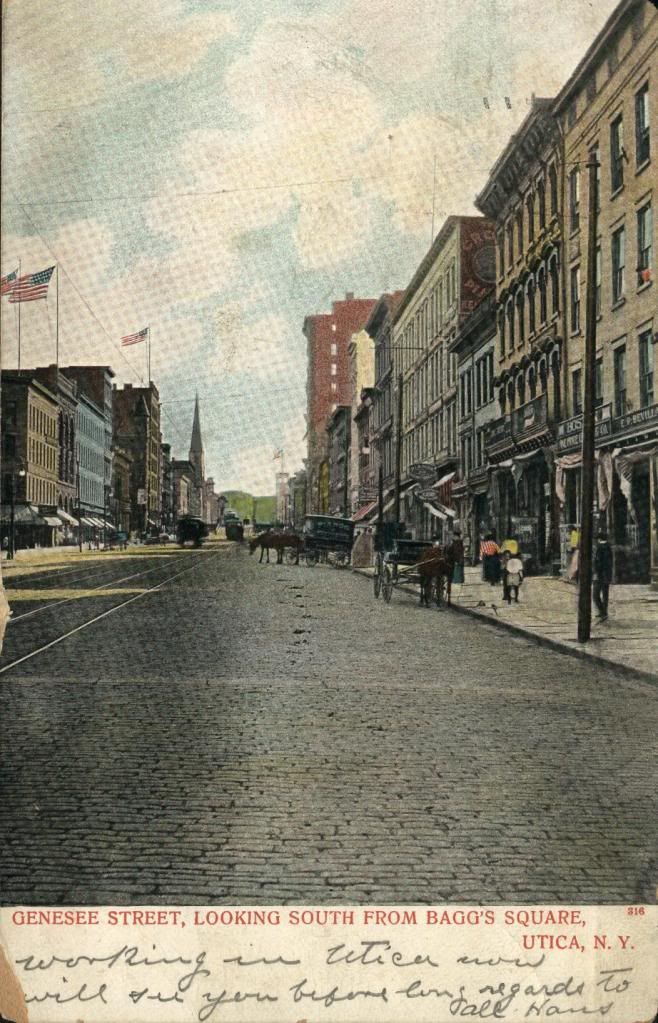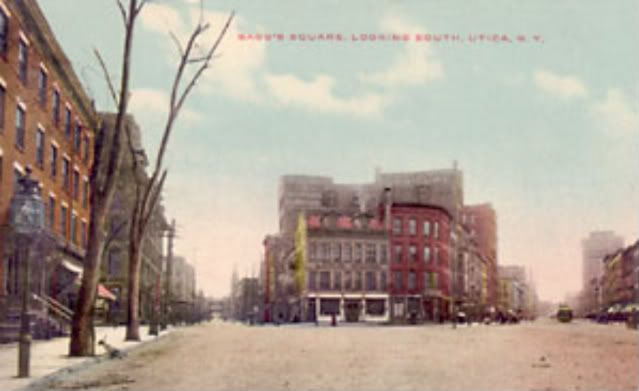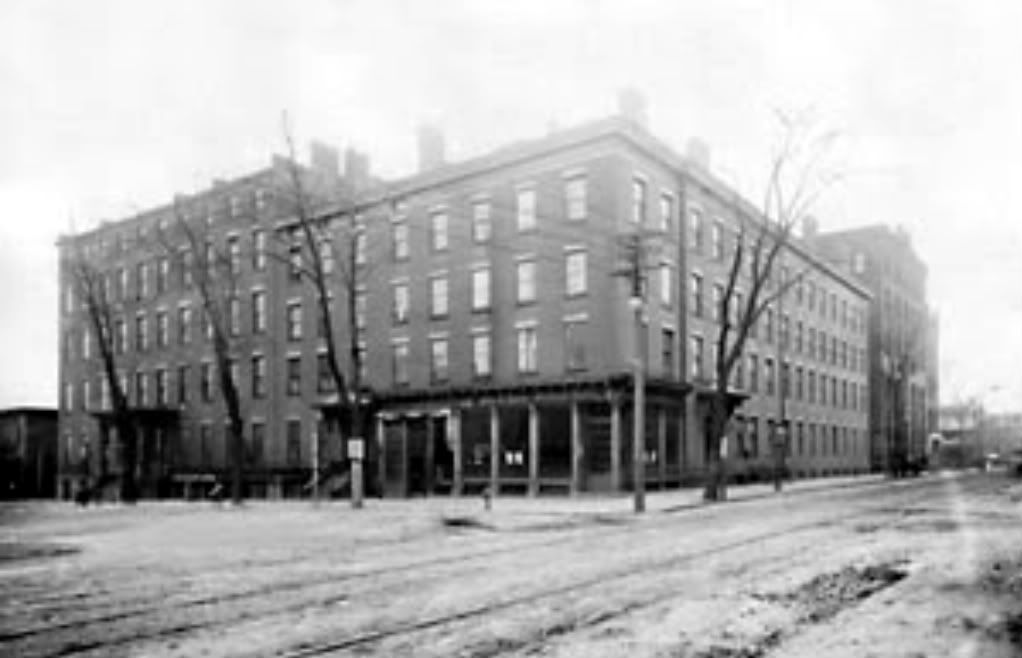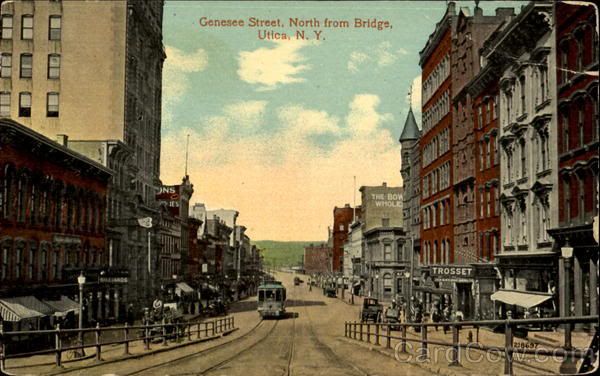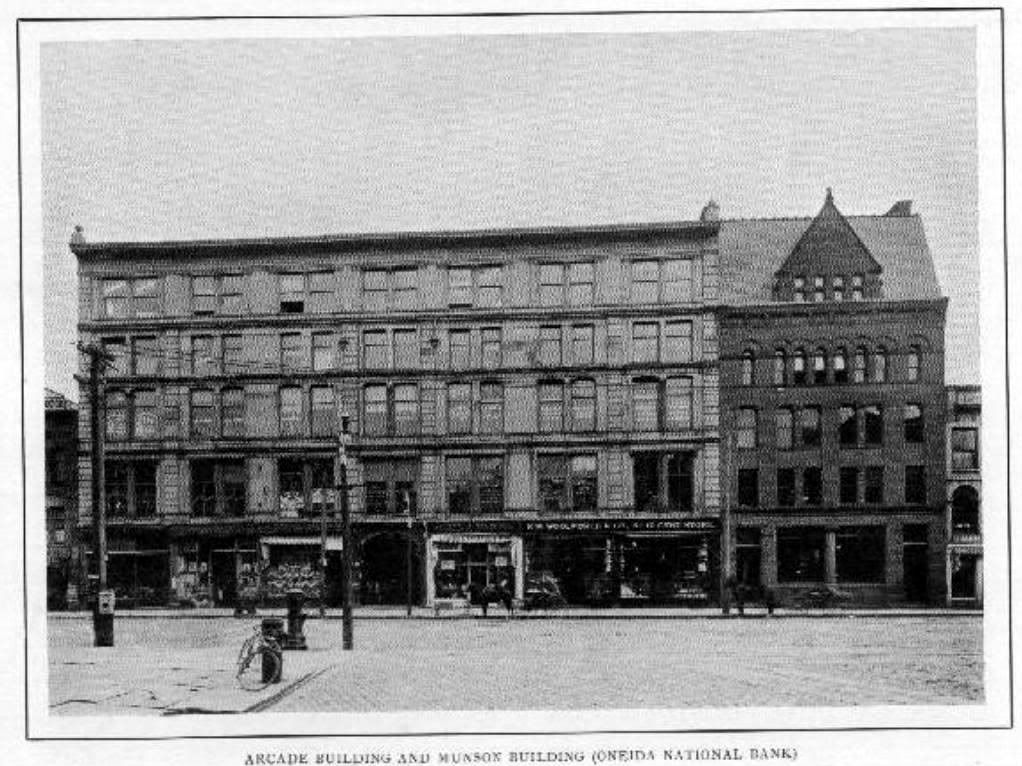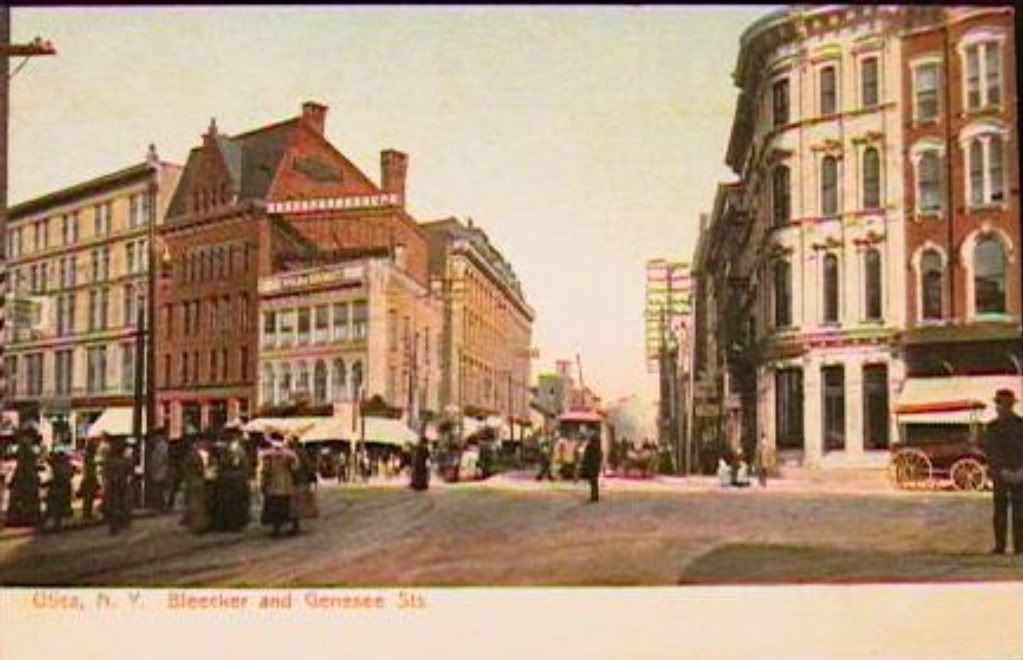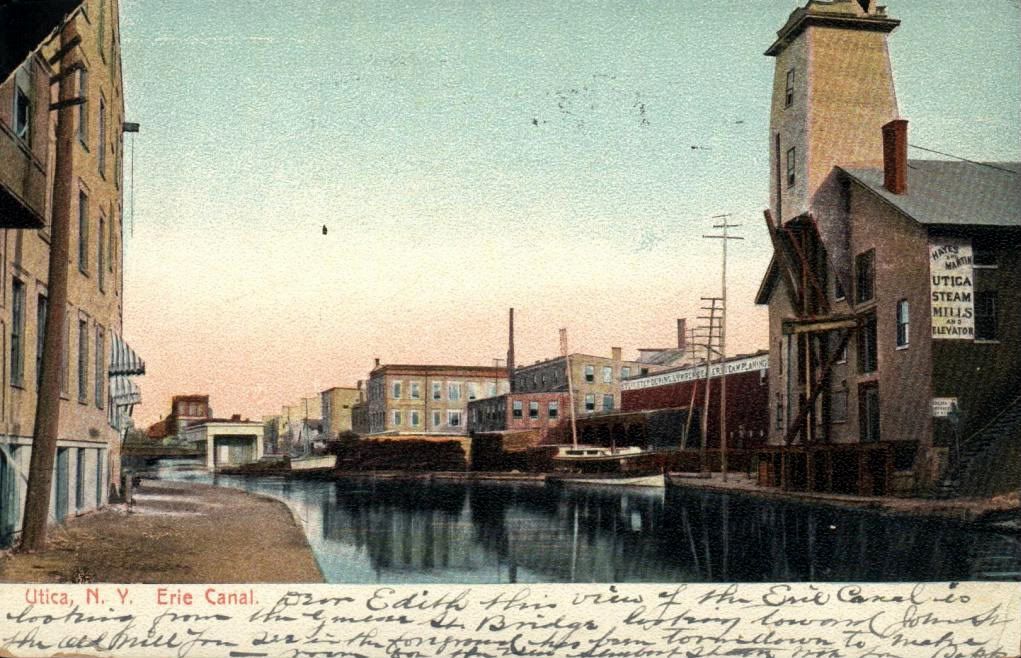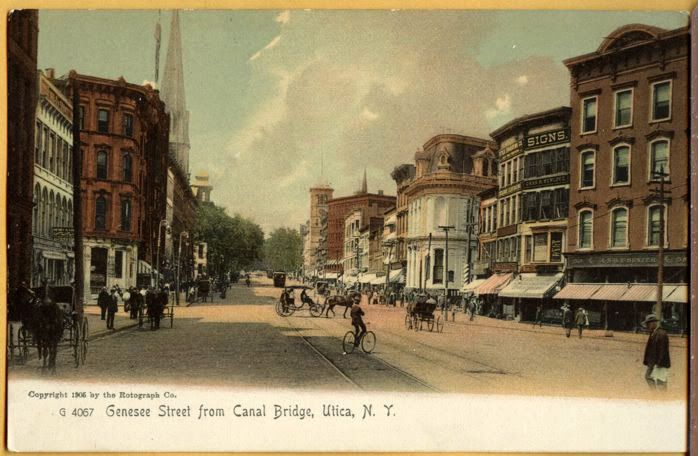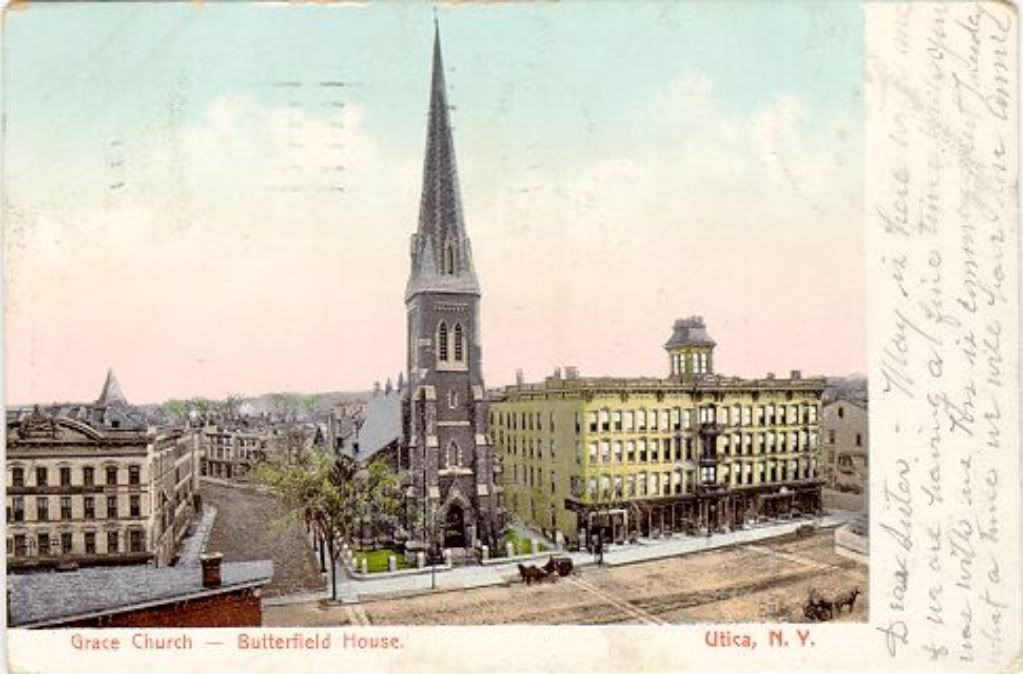Post by fiona on Nov 14, 2010 18:11:45 GMT -5
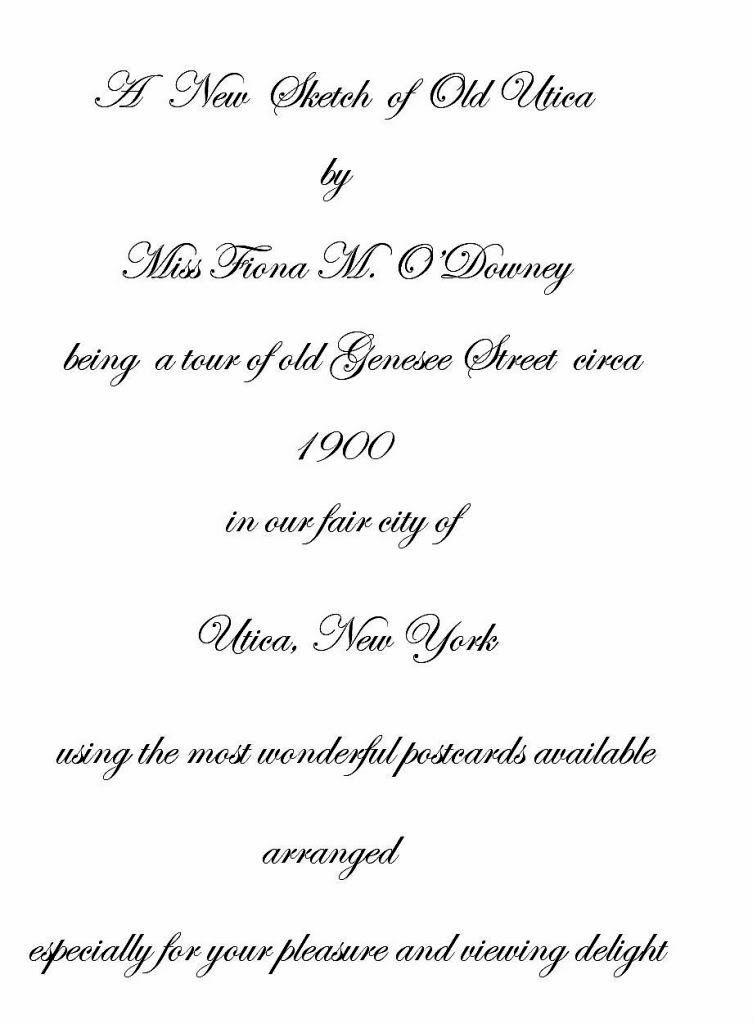
This work is dedicated to my daughter, Pamela, who is a continual inspiration to me.
"We live in deeds, not years; in thoughts, not breaths;
In feelings, not the figures on a dial, we should count time by
Heart throbs. He most lives, who thinks most, feels the noblest,
Acts the best. - anonymous
The following description of Genesee Street is taken from an excerpt at the Schenectady digital history archive:
"Genesee Street, one of America's most beautiful avenues, is the backbone of Utica and its most characteristic feature. One cannot think of Utica without visualizing Genesee Street. It runs from old Deerfield Corners, on the Mohawk Turnpike in present Utica, west to beyond New Hartford, in which six miles it is built up the entire distance. Actually the same street is building northward, on the Black River Road, so that Genesee Street before many years, will extend as a built up tree-lined street from Deerfield Hills to Clinton and Hamilton College, a distance of twelve miles. From Baggs Square to beyond Hopper Street, Genesee Street is a business street, traversing the heart of the business section, which is rapidly encroaching on the Genesee Street residential section, southwest. Many of Utica's finest business buildings and residences lie on Genesee Street.
Genesee Street was originally the Indian trail to the Seneca country, later known as the Genesee Road and improved as the Seneca Road in 1800, by which name this beginning of the road to Buffalo is known today. The trail from Old Fort Schuyler and the old Mohawk River ford passed over present Park Avenue and met the Genesee trail at present Oneida Square.
Genesee Street is the Mohawk River crossroads of a trail which runs from the St. Lawrence River to Utica and thence by forks south to Chesapeake Bay and west to Buffalo.
At Utica the New York-Buffalo highway has a sea level elevation of about 440 feet, the same as that of the divide at Karner's, between Albany and Schenectady. The Utica-Syracuse highway reaches its highest point at Lairdsville, ten miles west of Utica and three miles west of Kirkland, at a sea elevation of 720 feet.
Three small streams pass through the city and enter the Mohawk, the most westerly having had its bed utilized by the Chenango Canal, now (1924) abandoned. The other creeks are Ballou and Starch Factory creeks. The Sauquoit enters the Mohawk between the western city suburban villages of Yorkville and Whitesboro. Several suburban industrial places are located on the Sauquoit south of Utica.
In the construction of the Barge Canal (1905-1918) a movable dam and a terminal lock were located at Utica terminal harbor. West of Utica to Rome and eastward to Frankfort, the Barge Canal follows a land-line cut on the north side of the Mohawk River.
The New York State Hospital for the Insane is located near the western limits of Utica. The Marcy division of the Utica State Hospital is located on the Utica-Rome highway, about five miles west of Utica." 1.
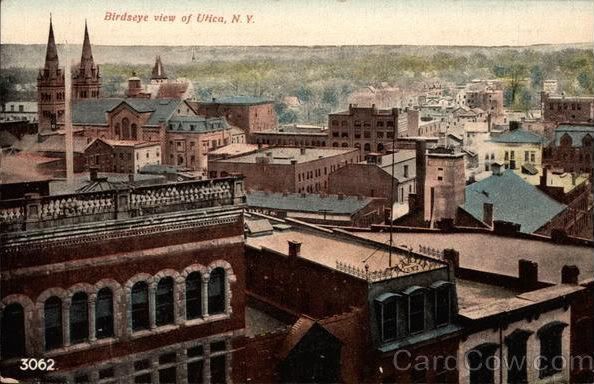
A "Sketch Of Old Utica", by Blandina Dudley Miller, was first published in 1895 and then reissued after her death in 1913 by Miss Miller's sister, Helen Lincklain Miller. This slim volume has become a classic among those collectors of Uticaania and the text can be viewed on the Internet simply by putting the name Blandina Dudley Miller into a search engine. In the book Miss Miller painstakingly outlined life for us, as she knew it, in Utica of the mid and late nineteenth century. She was a historian of note and her love for the city is evident in the many wonderful photographs and stories therein. However, while she celebrated Utica's noble past, it is also clear that she mourned the passing away of the old families, the buildings, indeed a way of life. Indeed, Miss Miller writes clearly in the introduction:
"In these mansions used to be free hearted hospitality. Here
great fires up the chimney roared and guests oft gathered at the board."
and:
"The old houses of Utica are so rapidly disappearing from our
streets before the march of modern improvement, that it has been deemed of sufficient interest to jot down these fragmentary details of the life of some of the early settlers and descriptions of their dwellings, for the pleasure of those now living, and perhaps for the amusement of those are to come after us; who may scarcely refrain from a smile at the quaintness and simplicity of Utica in it's early days. The little village has grown into a beautiful city, far surpassing the dreams or hopes of it's original founders in the luxury and beauty of it's houses; yet there was an air of substantial comfort and stately dignity about these old homes that will not be effaced from the memories of those who as children had the happiness to sit around the ancient fireplaces, or to gather fruits and flowers in fields and orchards now built over by solid blocks of stores and houses." 1. (bdm,1893)
A photograph of Miss Miller, from the second edition, as well as the first page of her book can be seen below.
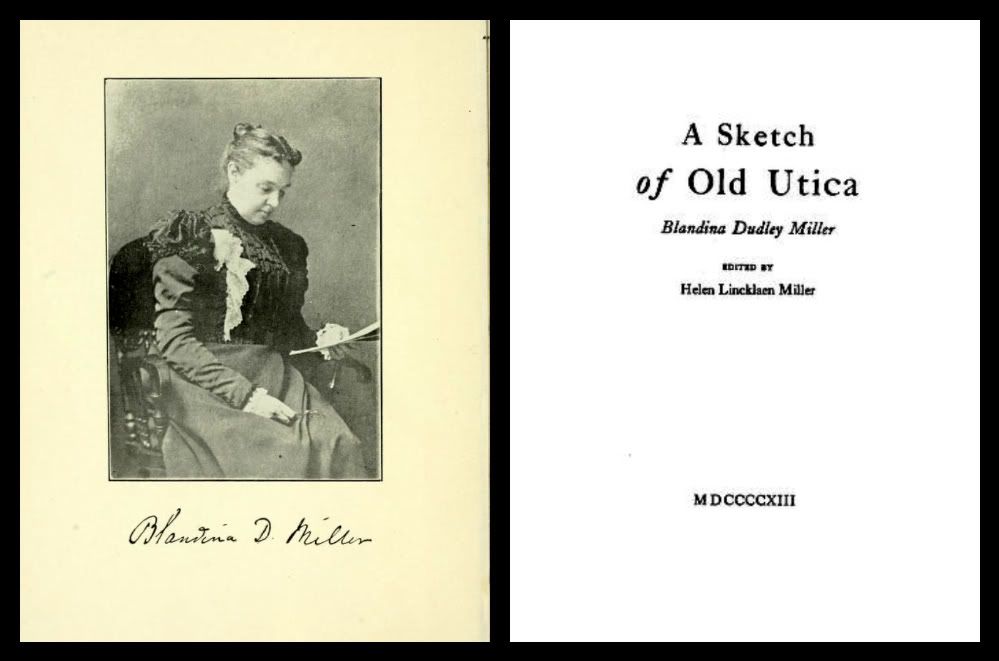
Miss Miller was one of the daughters of noted Utican Rutger B. Miller and had a much loved niece, Mary Brandegee Wood, also of Utica, who died in a fire at the Genesee Flats Apartment House on 3/3/1896. Mary was only 15 years old and I would like to think that she too inherited her Aunt's love of history. To that end I have " reached across that great divide" and invited Mary B. here to be our tour guide for my "NEW SKETCH OF OLD UTICA" and she has graciously accepted.
Before Mary begins her tour, I would like to make it clear that I am in no way, shape or form attempting to replicate or upstage Miss Miller's literary work. It it a definitive work of historical scholarship that will stand the test of time. My work consists totally of postcard views that I have selected for both their historical content as well as their beauty. I have attempted, to the best of my ability, to arrange them sequentially, so that one may feel as if they are actually walking up Genesee Street around 1900, at the turn of that century. There are many gaps in the views of the buildings, either the cards do not exist or I cannot find them, however, it is my hope that this thread will add, in some small way, to the understanding of the history of a great " American Avenue" and shed a bit of light on the lives of those who lived, shopped and sojurned there.
We begin at the Erie Canal bridge over Hotel Street and will be "walking" South up Genesee Street toward the New Hartford town line. Enjoy.

